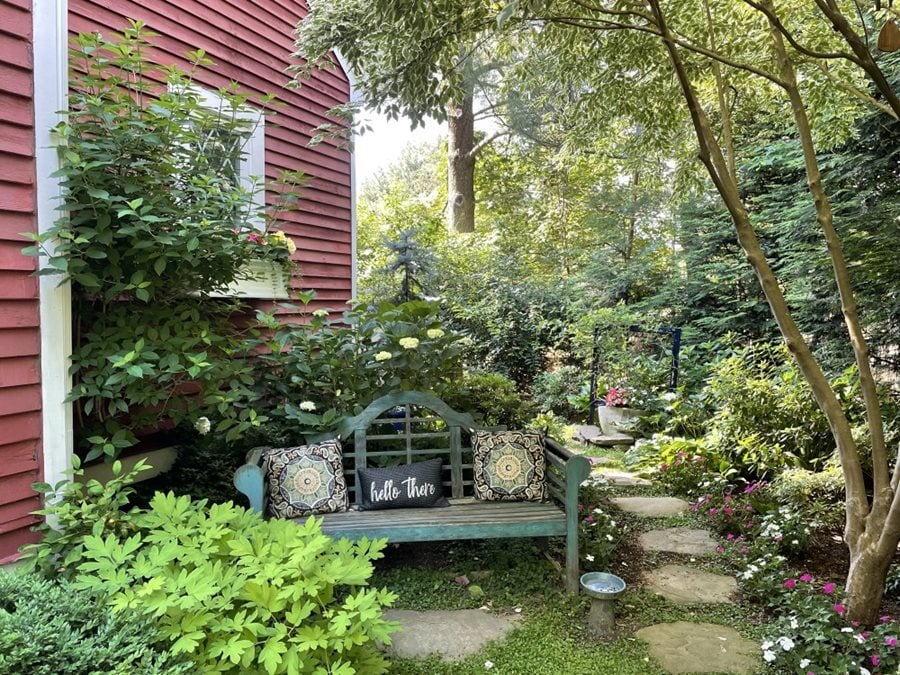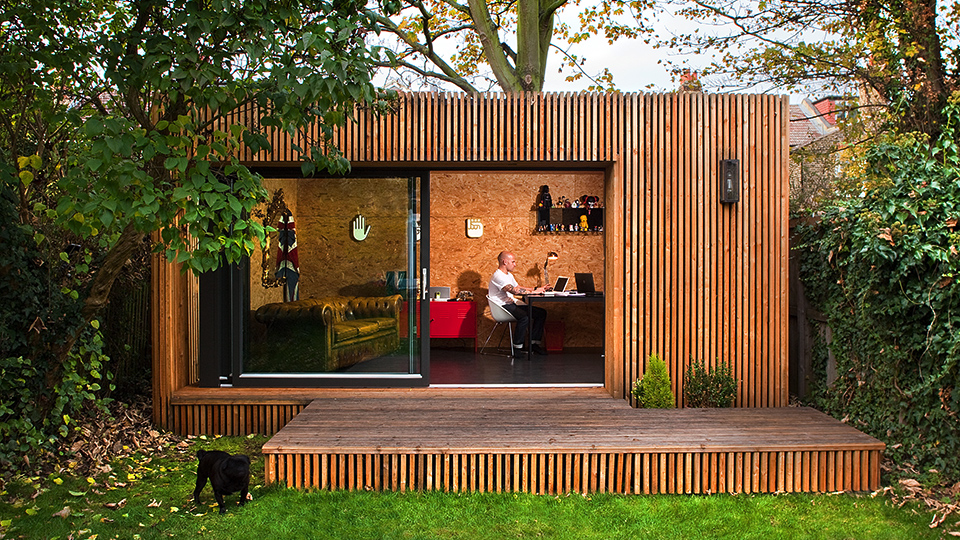Handy Reasons On Planning Permission On Garden Outhouses
Handy Reasons On Planning Permission On Garden Outhouses
Blog Article
How Big Is A Garden Space?
If you need permission to build of conservatories, garden offices and outhouses, or gardens is contingent on certain size restrictions. Here's a summary of the most common criteria for size that could need you to obtain planning permission: Total Area Coverage:
If you are planning to build a detached building, you will need to obtain permission if the proposed construction, as well as any outbuildings that are already in place are more than 50 percent of the land surrounding the original house.
Height Restrictions:
Buildings with a single story: The maximum height of the eaves should not exceed 2,5 meters. For roofs with dual pitches, the height must not exceed 4 meters.
The highest height for buildings that are less than 2 meters tall is 2.5 meters.
Floor Area:
Building regulations can be required for structures that have greater floor space than 30 sqm and even if the planning permission is not required.
Distance from borders:
If the structure is more than 2.5 meters high and is within 2 meters of a line, then planning permission is required.
Building Usage
While not strictly a size restriction, the intended usage of the garden room can impact whether planning permission is needed. Planning permission might be needed if, for instance the structure is planned to be used for office or residential space.
Permitted Development Rights:
Permitted Development Rights (which permits certain kinds of work to be completed without requiring full application for planning) are subject to specific size restrictions and restrictions. The rights may vary based on if the property is situated in a conservation zone or is subject to restrictions.
Extensions, conservatories and other conservatories of different types:
For an extension of a single story, the maximum depth is generally 4 meters for detached houses and 3 meters for semi-detached and terraced homes. They can be extended up to 8 and 6 meters, for example, under the Neighbour Consultation Scheme, subject to certain conditions.
The ceiling of a single-story rear extension should not exceed 4 meters.
Side Extensions
For side extensions for side extensions, the width must not exceed half the width of the house that was originally built and the maximum height shouldn't exceed 4 meters.
Volume Restrictions
In certain areas (like conservation areas or Areas of Outstanding Natural Beauty) any addition which increases the size of the house in more than 10 percent or 50 cubic metres (whichever is greater) may require planning permission.
Front Extenders
Planning permission is required to extend extensions beyond the front of the home facing the street.
It's important to inquire the local planning authority, as rules can vary according to the local council and property conditions. Even the planning permission doesn't have to be sought Building regulations approval may be needed for structural and safety motives. Take a look at the top garden ware for more recommendations including garden room planning permission, garden room permitted development, garden buildings , garden rooms hertfordshire, what size garden room without planning permission, garden room conservatory, costco garden room, garden office hertfordshire, garden rooms hertfordshire, garden room planning permission and more.
What Kind Of Permissions Are You Looking For For Garden Rooms And Other Listed Structures?
If you're planning to build conservatories gardens, outhouses, garden rooms or garden offices on the site of a listed property There are particular requirements to be taken into account. These are the main factors to consider when planning permissions are required for these projects. Listed Building Consent
In addition to getting the planning approval, any alteration or expansion within the limits of a building that is historic is subject to listed-building approval. It is important to note that any changes could alter the distinctive nature of a listed building.
Influence on Historical Character:
This covers garden rooms as well as outbuildings. This includes garden structures and outbuildings.
Design and Materials
The design and materials should be reflective of the historical and architectural significance of the existing structure. It might be necessary to employ traditional materials and custom designs, which require planning permission.
Distance from the Listed Building
New structures built close to heritage assets are examined to determine their effect on setting and aesthetics. It will be necessary to obtain planning approval in order to make sure that new buildings don't alter the building's appearance.
Size and Scale
The size and scale of the proposed garden room, conservatory or extension should be appropriate and sympathetic to the listed structure. More substantial structures will require careful planning and evaluation.
The location of the property
Planning permission may be affected by the location of a new structure regardless of whether it is front, on the side or at the rear of a listed building. The locations that are noticeable or have an important impact on the building's key views will usually be subject to a more thorough evaluation.
Internal Changes
Even if a new structure has been detached or erected, any changes inside (such creating new routes for access) to the listed property must be accompanied by the building consent listed and planning approval.
Conservation Area Overlap
If the building also falls within a conservation area additional restrictions are in place. To ensure compliance with the listed building regulations as well as conservation area regulations, planning permission is needed.
Use of the building:
Planning permission may be required according to the purpose of a garden room or an outbuilding. Any uses that require a substantial change, such as commercial or residential uses, are subject to closer inspection.
Impact of structural changes:
If a structure could be compromising the structural integrity, it would require approval for planning.
Local Authority Guidelines
Local authorities have guidelines that define what type of construction or modification is permissible for listed buildings. Planning permission is required to ensure these guidelines are adhered to.
Professional Assessments
Proposals to work on listed buildings often require detailed evaluations by conservation experts. These assessments help determine the appropriateness of the proposed changes, and help support the planning permission application.
In summary In general, it is essential to obtain planning permission and listed construction consent when constructing extensions and conservatories, garden rooms, or gardens in addition to outhouses and conservatories that are attached to listed structures. Consulting with the local planning authority and heritage experts before beginning the planning process is essential to ensure that the building is in compliance with all applicable laws and regulations, as well as to protect the historic and architectural integrity of the building. Take a look at the recommended "composite cedar cladding" for site recommendations including do you need planning permission for a garden room, garden room, garden room permitted development, insulated garden rooms, do you need planning permission for a garden room, composite summer house, outhouse buildings, gym outhouse, outhouses for garden, small garden office and more.
What Planning Permits Are You Required To Get For Your Garden Spaces, In Terms Of Utilities And Infrastructure?
If you're planning to construct a garden room, conservatory or outhouses (garden offices) or extension, utility and infrastructure considerations are essential. This will affect the requirement for a permit to plan. These are the most important factors to consider. Water Supply and Drainage
If the new building requires connection to drainage or water supply systems, planning approval may be required. The local water authority will need to assess whether the structure's impact on the water supply system as well as sewage is acceptable.
Gas and Electricity Connections
A planning permit could be required if a new structure is required to be connected to gas or electricity. The connections must be in line with the building and safety regulations.
Utility Easements
Planning permission is required for structures that are located in easements (areas set aside for utility lines and infrastructure). Construction within these zones may require the approval of local utilities.
Septic Tanks and Sewage Systems:
If a building is being constructed that requires an septic treatment system or even a small tank for septic, then planning permission is needed. For these systems it is crucial to adhere to requirements of the environmental and health standards.
Drainage Surface Water Management and Surface Water Management
A planning permit might be required to tackle surface water runoff and drainage from the new structure. You might need to take steps to prevent erosion, flooding, or pollution of water.
Access to Utilities for Construction
In the event that construction requires access to utilities for a short period of time (such as water for construction purposes), planning permission may be necessary. The temporary connections must meet the environmental and safety standards.
The impact on local infrastructure
It is crucial to obtain permission to plan in order to determine the impact that the construction will have on local infrastructure. This comprises utilities, roads and other services that are public. Local authorities will assess whether existing infrastructure can support the proposed development.
Waste Management and Recycling
Permissions for planning may contain requirements concerning recycling and waste management throughout and after construction. Recycling and waste disposal methods must be adequate to reduce the impact on the environment.
Efficiency in Energy Efficiency:
It is possible to get planning permission prior to installing energy-efficient systems or renewable energy sources (such solar panels and heat pumps) in your new home. The codes for construction and environmental standards should be observed.
Telecommunications, Internet and Connectivity
Planning permission could be required for a new building that will require telecommunications or internet. It is important to comply with the regulations and standards for communications.
Access to the Road and Footpath:
Creating or modifying access roads or pedestrian routes for a new building may require planning permission. It is essential to follow safety regulations and standards for the construction of footpaths and roads.
Public Transport Accessibility:
Planning permission might be required if a new structure interferes with the public transport infrastructure (such buses stations or stops). The public transport infrastructure should conform to all rules and standards.
In short utilities, infrastructure and other elements are crucial in determining whether you need planning permission for the construction of garden rooms, conservatories, or outhouses. Early planning consultation is vital to ensure that the building is in compliance with all applicable standards and regulations. Take a look at the top rated how to wire a garden room for blog recommendations including outhouses, composite garden office, what size garden room without planning permission, costco outhouse, garden rooms in St Albans, garden rooms, out house, how to lay decking on soil, conservatories and garden rooms, garden room heater and more.